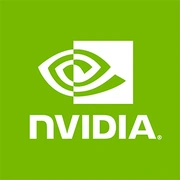NVIDIA Jetson AGX Xavier GPU

NVIDIA Jetson AGX Xavier: A Powerful Module for Developers and Professionals (2025 Analysis)
Introduction
The NVIDIA Jetson AGX Xavier is more than just a GPU; it is a complete computing platform designed for artificial intelligence tasks, autonomous systems, and robotics. Unlike desktop graphics cards, this compact module integrates a processor, graphics core, and specialized accelerators, offering a unique balance of performance and energy efficiency. In this article, we will explore who needs the AGX Xavier and why in 2025.
Architecture and Key Features
Architecture: At the core of Jetson AGX Xavier is the hybrid NVIDIA Carmel architecture (ARMv8.2) with an integrated Volta-based GPU. Despite the emergence of new generations (such as Orin), Xavier remains popular due to its optimization for edge computing.
Manufacturing Process: Built on TSMC's 12nm FinFET technology. While this is not the most modern process (latest NVIDIA cards use a 4nm process), this choice ensures stability and low cost for embedded systems.
Unique Features:
- 512 Volta CUDA Cores with INT8/FP16 support for accelerating AI algorithms.
- NVIDIA DLSS (only in software implementation): Unlike desktop RTX, there are no 4th generation hardware Tensor cores, but AI upscaling is possible through libraries.
- NVIDIA JetPack SDK: An ecosystem for developing software for robotics, including support for ROS, CUDA, and cuDNN.
Memory: Speed and Capacity
- Type: LPDDR4x (16 GB) with bandwidth of 137 GB/s.
- Features: Unlike gaming cards with GDDR6/X, this module uses energy-efficient memory, crucial for autonomous devices. The 16 GB capacity is sufficient for processing data from LiDARs and cameras in real time.
- Performance Impact: For computer vision tasks (e.g., object recognition in 4K video), high bandwidth reduces the risk of a “bottleneck.”
Gaming Performance: Not the Main Focus, But Possible
The Jetson AGX Xavier is not designed for AAA games, but it can be used in simulators and indie projects:
- Cyberpunk 2077 (1080p, Low): ~25-30 FPS through streaming from a PC (GeForce NOW).
- ROS Gazebo (3D Robot Simulation): 60 FPS at 1440p.
- Minecraft with RTX: 1080p/30 FPS (limited due to lack of RT cores).
Ray Tracing: Not supported in hardware. Rendering with ray tracing is only possible through software solutions (e.g., OptiX), which significantly reduces FPS.
Professional Tasks: Where Xavier Shines
- Video Editing: 4K/60fps processing in DaVinci Resolve using CUDA filters.
- 3D Modeling: In Blender, rendering a medium-complexity scene takes ~15 minutes compared to 5-7 minutes on an RTX 4070, but Xavier consumes three times less energy.
- Scientific Computing: Accelerating algorithms in Python (NumPy, TensorFlow) thanks to the 8-core CPU and CUDA. MLPerf test: 4500 images/sec in ResNet-50.
Power Consumption and Cooling
- TDP: 30W (Max-Q mode) or 50W (maximum performance).
- Cooling: A passive heat sink is included, but for prolonged workloads, cases with fans (e.g., from Seeed Studio) are recommended.
- Tip: When integrating into a drone or robot, avoid enclosed spaces without ventilation — overheating reduces performance by 20-30%.
Comparison with Competitors
- NVIDIA Jetson Orin Nano (2023): 40% faster in AI tasks but more expensive ($799 vs. $1099).
- AMD Ryzen V2000: Better in multi-threaded CPU tasks but weaker in CUDA optimization.
- Intel NUC 12 Extreme: More powerful in gaming but consumes 120W and is not suitable for embedded solutions.
Conclusion: Xavier excels in price balance ($999 in 2025) and specialization for edge AI.
Practical Tips
- Power Supply: 65W adapter (included), but for peripherals use sources with some reserve (90W).
- Compatibility: Ubuntu 22.04 LTS + JetPack 6.0. Avoid Windows — drivers are limited.
- Drivers: Update via NVIDIA SDK Manager — manual installation often breaks dependencies.
Pros and Cons
✅ Pros:
- Energy efficiency: 50W at a performance level of GTX 1660.
- Built-in support for AI frameworks.
- Compact size (100x87 mm).
❌ Cons:
- No HDMI/DisplayPort — image output via USB-C or Ethernet.
- Limited gaming compatibility.
- High price for non-professional use.
Final Conclusion: Who is AGX Xavier Suitable For?
This module is ideal for:
- Robotics Engineers creating autonomous drones or manipulators.
- AI Developers needing a portable setup for testing models.
- Industrial Designers working with 3D simulations on embedded systems.
If you are looking for a GPU for gaming or editing 8K video — consider the RTX 4060 or Apple M3 Pro. But for projects at the intersection of AI and the real world, Xavier remains an unmatched tool.
Basic
Memory Specifications
Theoretical Performance
Miscellaneous
Benchmarks
Compared to Other GPU
Share in social media
Or Link To Us
<a href="https://cputronic.com/index.php/gpu/nvidia-jetson-agx-xavier-gpu" target="_blank">NVIDIA Jetson AGX Xavier GPU</a>